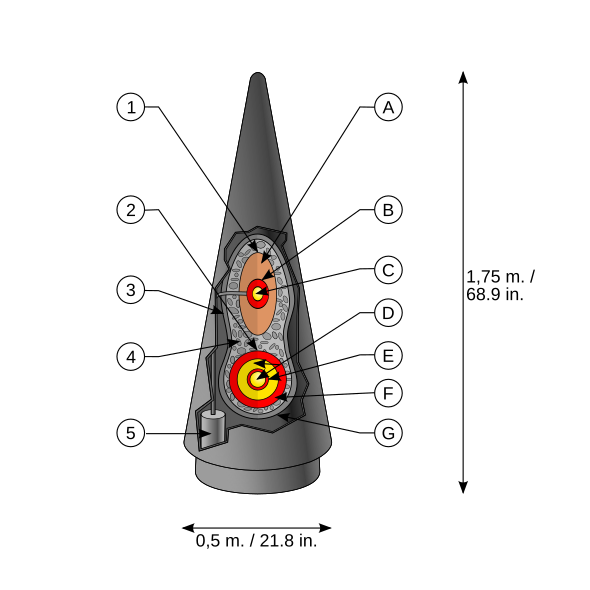It totally depends on who shoots first. If it's the Americans it is possible to receive no damage but probable that targets in Alaska get hit. If it's the USSR, minimum of high single digits to several dozen. A couple of years ago i went on a bit of a research binge about this out of pure curiosity over quite a few months; here is a small portion what I have found:
For the US:
- B-52s were concentrated in 37 Squadrons consisting of 15 aircraft per squadron. 33 Squadrons were initially assigned to 1/8 Airborne Chrome Dome alert consisting of 2 sorties per day with a 24 hour mission. 4 B-52H Squadrons were undergoing Quick Clip fuel tank modifications and were not initially assigned but as they became available were added until by 05 Nov there were 75 bombers assigned to airborne alert. All other B-52s available in the squadrons were put on ground alert with a planned wheels up response time of 15 minutes; excepting unplanned maintenance issues of course. B-47s on REFLEX missions were on ground alert at overseas and CONUS bases. Other B-47 squadrons in North America not assigned to REFLEX were dedicated to follow up strikes.
- On 27 Oct, there were 65 of 67 planned B-52 Bombers on Chrome Dome missions with a schedule of 28 flying the Northern and 36 flying Southern Routes along with 2 aircraft on Thule guard. Each was equipped with 4 Mk 28 or 2 Mk 36 weapons. The G and H versions also carried a total of 22 GAM-77 Hound Dogs.
- 113 Atlas, 54 Titan 1, and up to 4 Minuteman were available at various missile bases and Vandenberg on 27 Oct. Response time from receipt of launch message to lift off varied from 3-5 for the Minuteman to 7 to 12 for the Atlas and Titan. 112 SLBM were available in 7 SSBNs in the Atlantic and Med with 8 Regulus missiles available in the Pacific.
-There were also the Thor, Jupiter, alert Fighter Bombers and CVs in various areas that I won't go into.
For the Soviets, which was a lot harder to get info on:
- 6 SS-6 (R-7) were available in two bases on the launch pads with warheads mated. Approximately a 6 hour response time with a fueled standby time of about 3 hours.
- 32 to 36 SS-7 (R-16) at 25 launch bases. I found the hard number of the bases but not how many missiles were available during the crisis. These are the generally agreed numbers I found. The bases were soft sites with 2 launch pads about 1000ft apart with a central launch control site between them. Under normal circumstances the missiles were stored in soft buildings besides the pads with the warheads in storage under KGB control nearby. For response time it took about 3 hours to mate, erect and launch the missile from a cold start. If the missile was mated with its warhead and erected, this was reduced to 1 hour. If also fueled, 15 minutes. I have seen the fueled standby as both 3 days and 30 days. Regardless; if the missile was fueled and not launched, it would have to return to the factory for full refurbishment due to the red fuming nitric acid used as an oxidizer. I'm am assuming they were mated and erected during this time but not fueled. NO missiles were in silos, though a test program was underway for this.
- About 60 M-4 Mya bombers and 100 Tu-95 Bear bombers, with about 35 of them set up as a KH-20 Kangaroo missile carriers. They were all located at 5 airbases and from what I have read none were dispersed or put on alert though I have not seen any documentation on this. As typical, the bombs were under KGB control. Response time in hours. Several hundred Tu-16 Badgers with Alaska well in range of them.
- They had approximately 500+ R-5M, R-12 and R-14 located at around 125 soft missile bases with a normal 4 launch pad configuration in similar circumstances as the R-16. A handful of R-12 were silo based. No idea of the alert status.
- Very little information on 5 Zulu V (1/2 x R-11) and 23 Golf Class SSBs (3 x R-11/R-13) and 4 Hotel Class SSBNs (3 x R-13/R-21) available and their patrols. Normally they were only detected in the European area and rarely. Few on patrol. Nothing like the USN.
The biggest issue for the Soviets is that they had NO missile warning system. They had just started a research program and the first radars were operational in the mid/late 60s. Any attack by the Americans would be a bolt out of the blue. Any US attack could have been launched within minutes of the order but I can see a planned attack set up over a few hours. For the Soviets if the C&C is disrupted then any response will be weak and uncoordinated. The military controls the platform and the KGB controls the warhead with instructions coming down individual chains of command and an extreme top down command situation.
